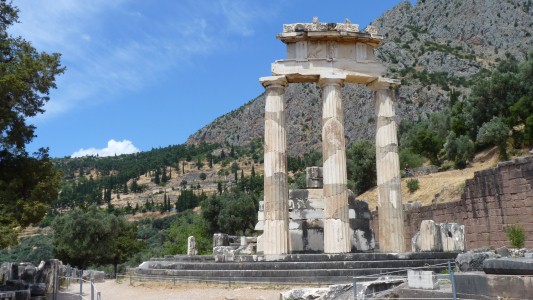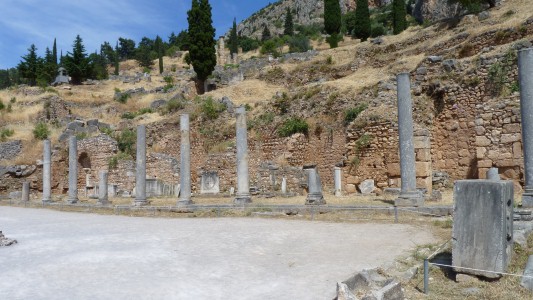
The Sanctuary of Apollo.
This is the Roman Agora (seems to mean market or forum) from 4th century AD.
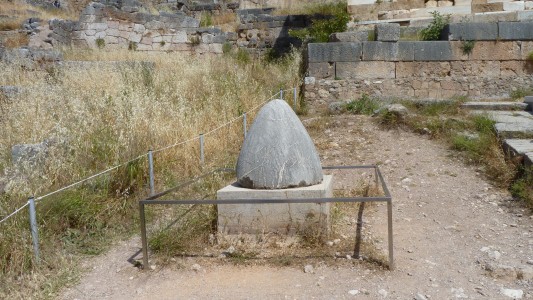
This Omphalos is a reproduction of the one that probably stood in the Adyton (in the Temple of Apollo) from where the Oracle spoke.
The Omphalos marked the place where the two eagles released by Zeus from opposite ends of the earth met. The navel of the world.
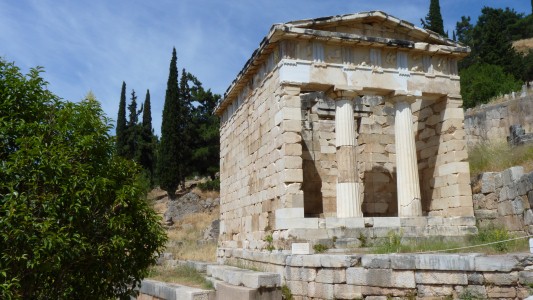
It held the offerings made by Athens to Apollo.
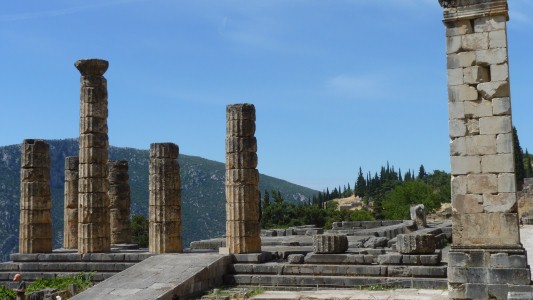
Within here Pythia, the priestess of the shrine, made her prophecies.
The process was to purify themselves at the spring, pay a tribute (the pelanos) and sacrifice an animal on the altar of Apollo.
The priestess was apparently a bit subdued by natural hydrocarbons emanating from the earth so mumbled a bit.
The prophecies thus needed a bit of interpretation.
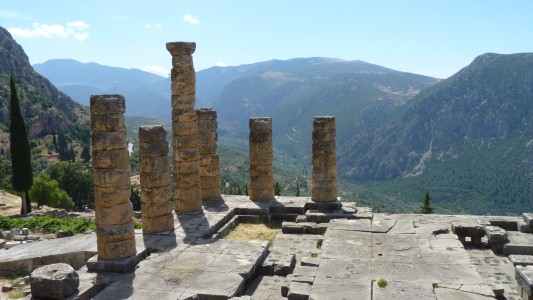
High on the side of the valley.
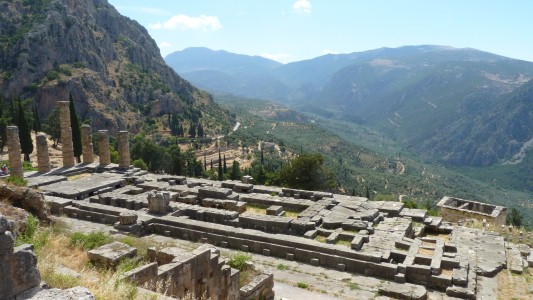
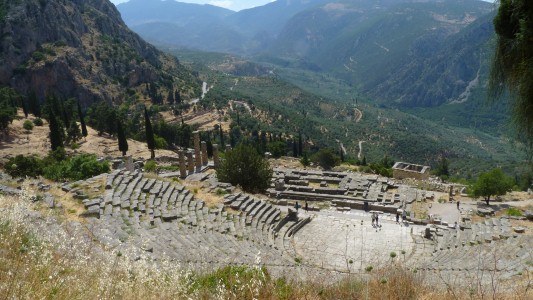
The Pythian Games were held every four years.
Part of the Pan Hellenic Games alternating every two years with the Olympic Games.
The Nemean and Isthmian Games were held in Corinth. In different months, every two years, in between Olympic and Pythian Games.
In total, The Olympiad..
Unlike the Olympic Games the Pythian Games included music and theatre.
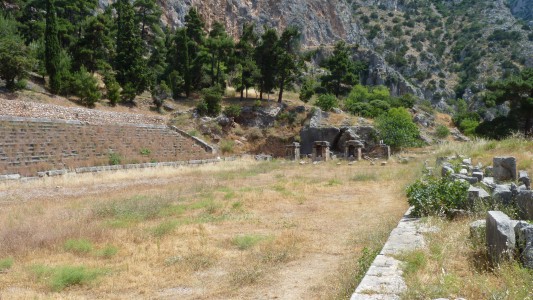
The Pythian Games to commemorate Apollo's triumph over the Python that used to protect the hill.
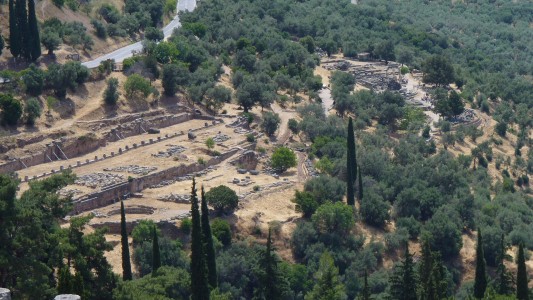
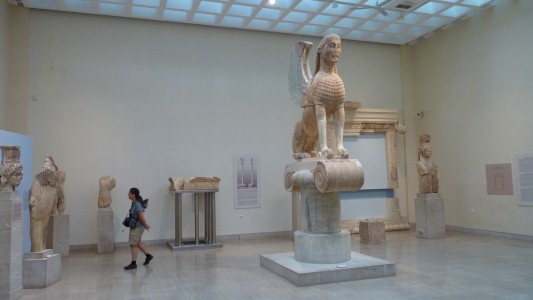
We learn that Sphynx has a broader meaning than just the one in Egypt.
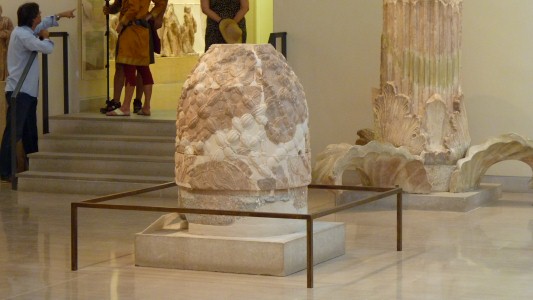
Possibly the original, though by now we are confused.
The sign here says much the same as the one next to the replica Omphalos we saw outside earlier. Eagles and the earth's navel.
We of course expected some variation of the story we'd read at The Metroon in Olympia. The story of how Rhea saved Zeus from Cronus by giving him a stone which he ate and later regurgitated.
Obviously there is still some rivalry between sanctuaries.
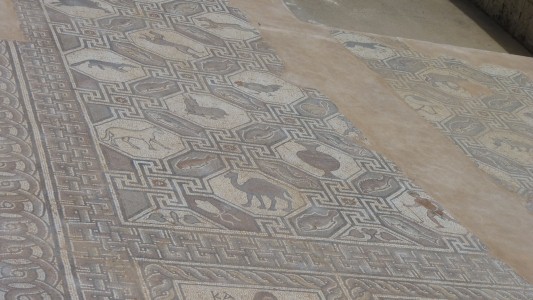
From the floor of an early Christian Basilica around 5-6th century AD.
Discovered during building work in the new town of Delphi and moved to near the museum.
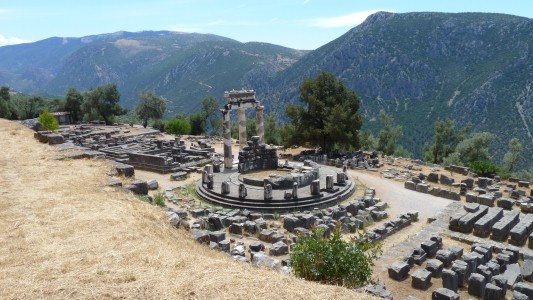
The circular building is the Tholos. 4th century BC.
Just like the Phillipeion in Olympia it has outer doric columns and inner half corinthian columns.
Though unlike the Phillipeion the function here is unknown.
Either side are Temples of Athena.
